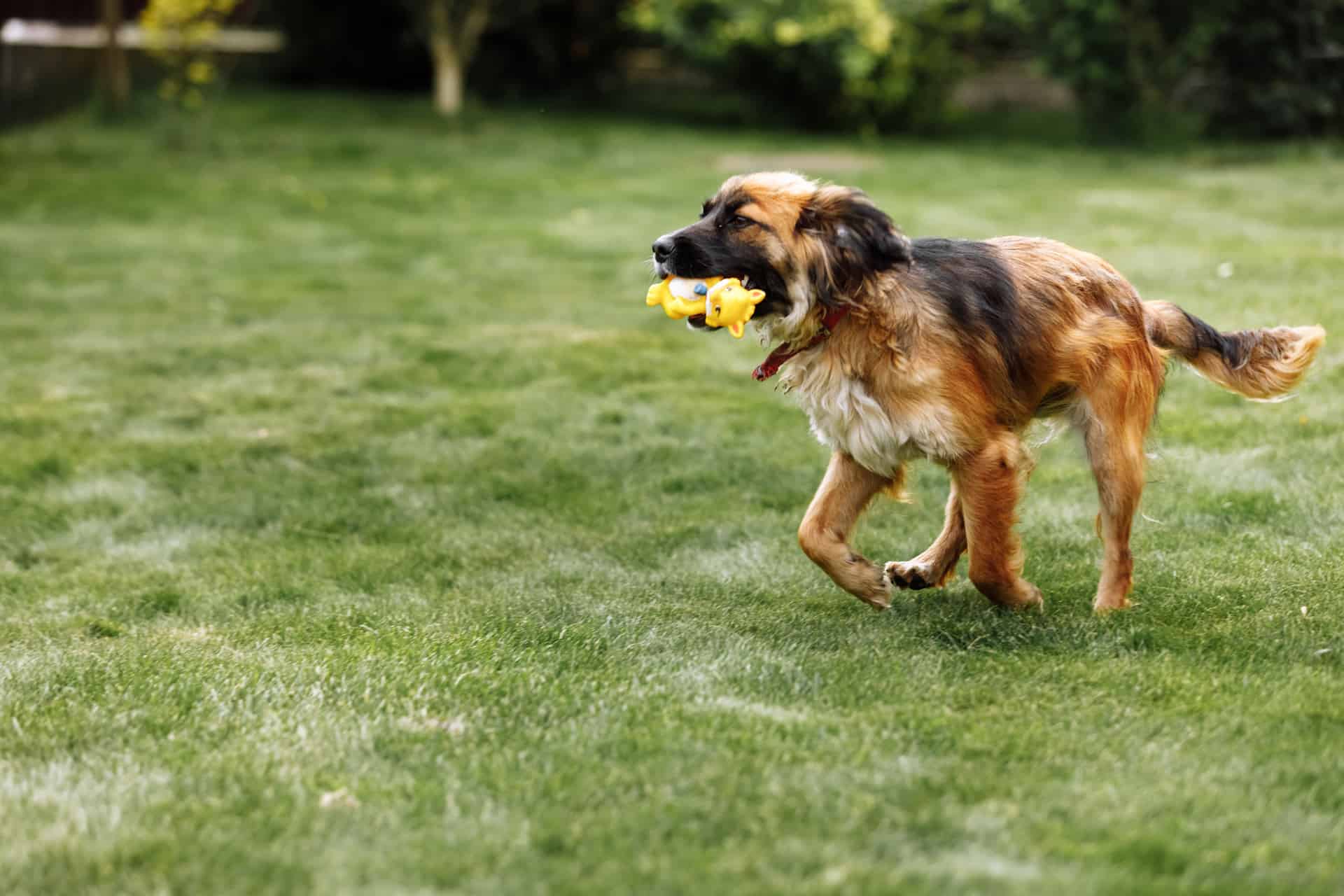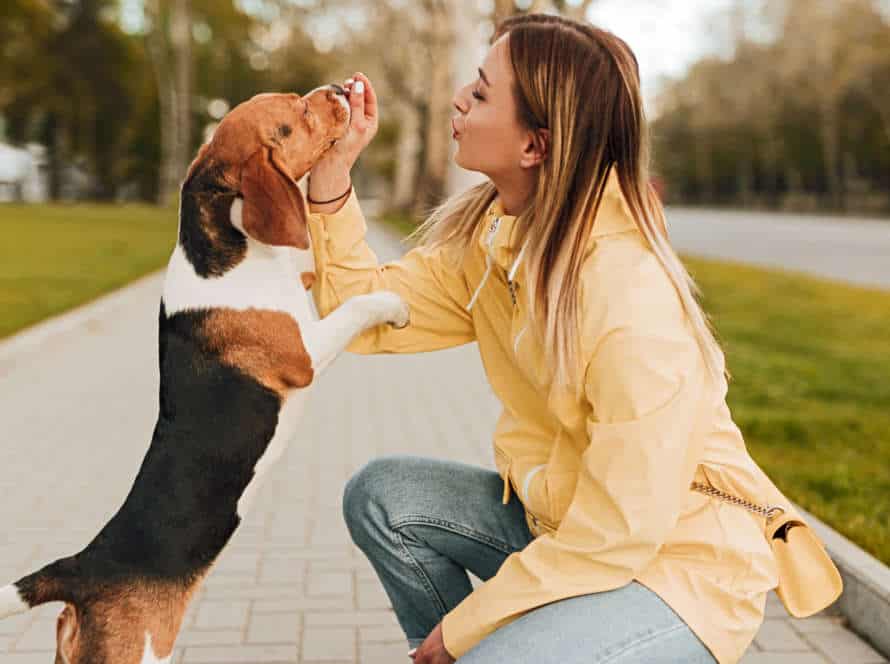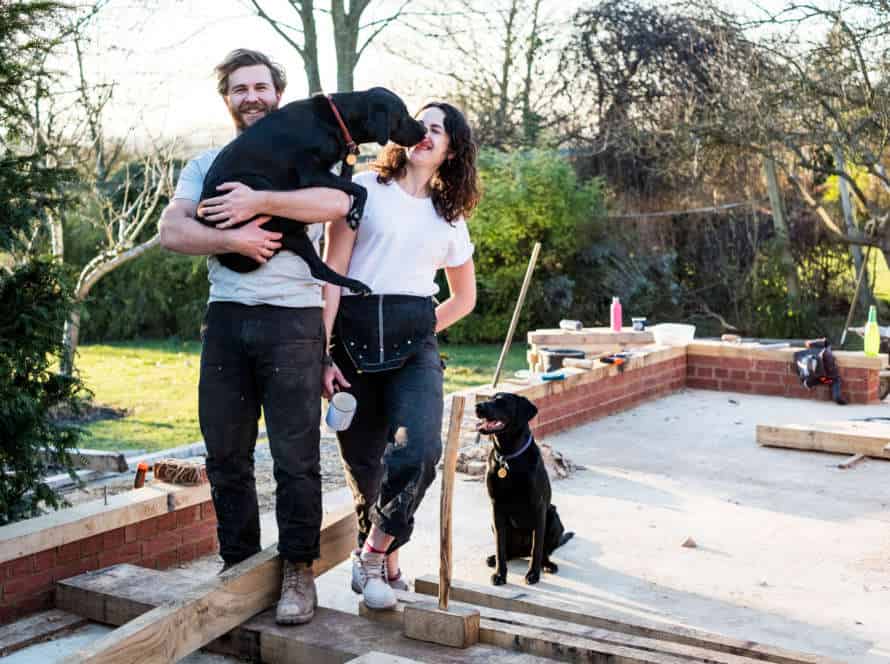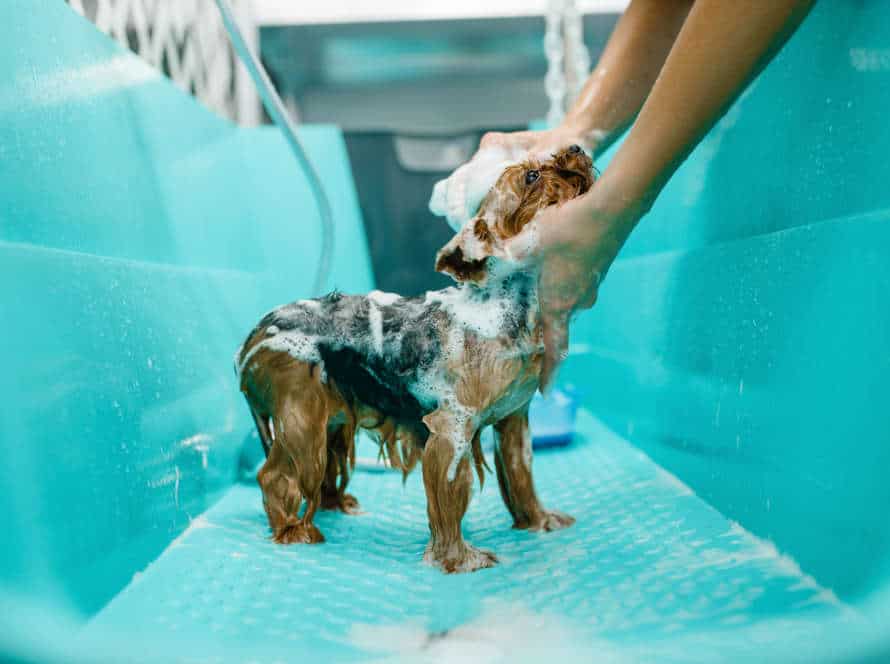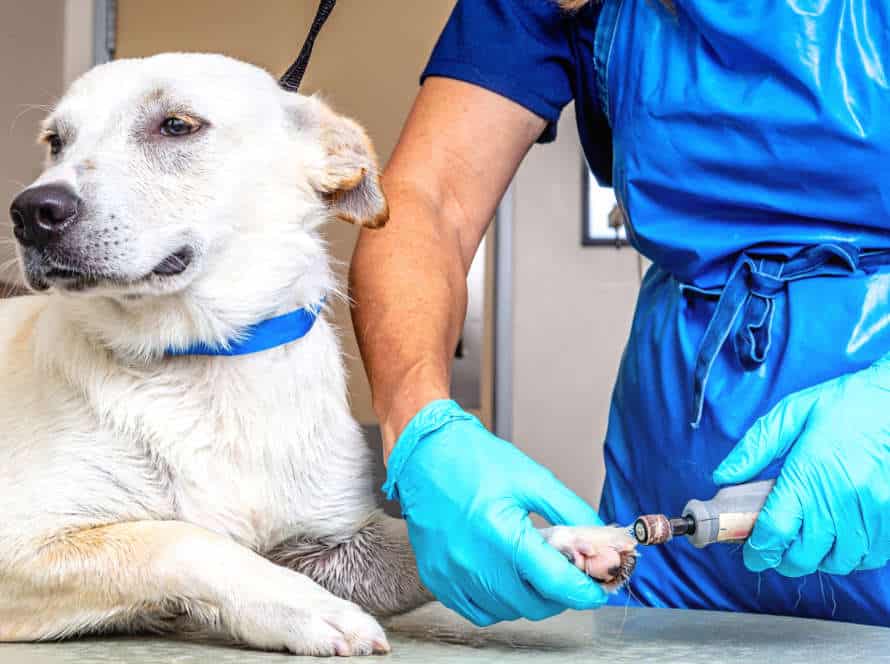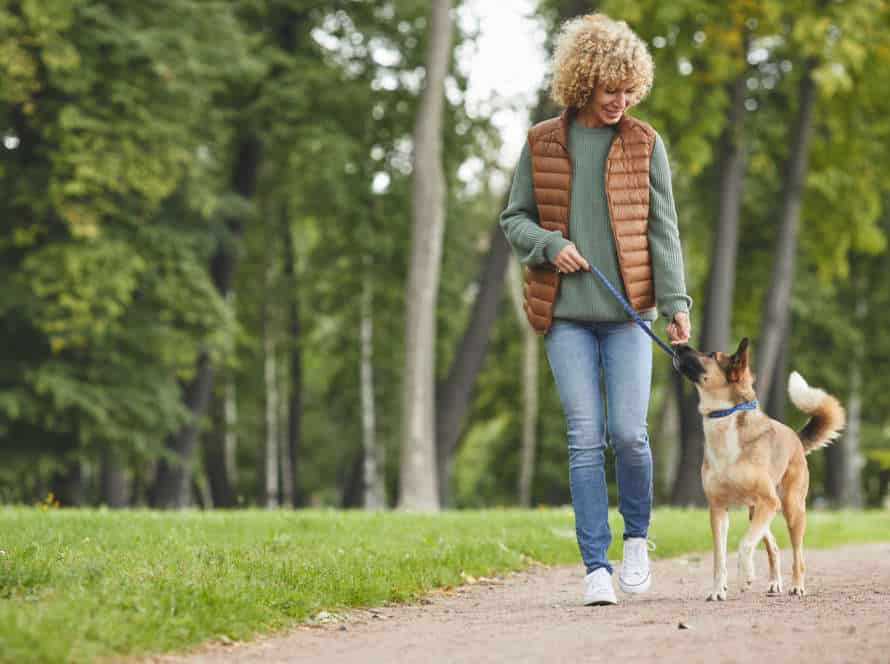A Dog Owner’s Guide to Exercise for Adult Dogs
Regular exercise is vital for adult dogs’ physical and mental health. Here’s a guide for pet owners to meet their pup’s needs:
- Work out the best amount of exercise for your dog’s breed, age, and condition.
- Create a daily routine with physical and mental activities.
- Go for walks to witness nature and see other dogs.
- Play games like fetch, hide-and-seek, tug-of-war, or puzzle toys.
- Sign up your pup for training classes or agility courses.
- Monitor their behavior during and after exercise to avoid overexertion.
- Pro tip: Record their routine and adjust it as their needs change. A well-exercised pup is a content pup!
Understanding Your Dog’s Exercise Needs
Exercise is essential for a pup’s wellbeing. As an owner, understanding your doggo’s needs is important. Adult dogs need different exercises than puppies. Exercise offers mental and physical benefits, and it can also help with behavioural issues such as barking, digging and chewing.
Let’s look at the factors in more detail and find out which exercises are good for adult dog health:
Factors affecting your dog’s exercise requirements
Grasping your pup’s exercise needs is a must. It assists you in tailoring their exercise routine for their physical and mental health. Factors like breed, age, size, and health can influence the exercise your pup needs.
- Breed: Different breeds have various energy levels and exercise needs. For instance, a high-energy breed, like a border collie, will need more exercise than a low-energy breed, like a basset hound.
- Age: Puppies have developing joints and muscles. Monitor their exercise routine to avoid overexertion. Mature pooches may have limitations depending on their health and age-related illnesses.
- Size: Bigger dogs usually require more exercise than smaller ones.
- Health: Health issues may demand changes to your pup’s exercise routine or that physical activity be avoided. Usually, active dogs need more exercise than those that aren’t.
These factors can help you give your furry friend a suitable exercise routine for the best outcome in the short and long term.
The importance of regular exercise for adult dogs
Exercising regularly is vital for grown-up dogs. It helps them release energy, stimulate senses, and stop boredom and bad habits. Here are some things to note for your pup’s exercise needs:
- Know their breed and age. Different breeds and ages have different needs.
- Think about their lifestyle and energy level. That’s how you decide type and amount of exercise.
- Look for signs like panting, relaxed body language, and a wagging tail when they’re tired but content.
- Change exercise routine to keep them engaged and challenged.
Regular exercise is great for physical and mental health of your pup. They will be happier and healthier!
How much exercise do adult dogs need?
Your adult dog’s exercise needs vary, depending on its breed, age, size, and health. Generally, your pooch needs 30 minutes to 2 hours of exercise daily, for physical and mental wellbeing. High energy dogs or working breeds may need more intense, frequent exercising.
These tips can help you understand your pup’s exercise needs:
- Talk to your vet to create an exercise plan based on your dog’s age, breed, and health.
- Regular physical activity strengthens heart and lungs, encourages healthy weight, and reduces the risk of diseases.
- Do a variety of exercises, like walking, running, swimming, and agility training to keep your pup interested and stimulated.
- Avoid overexertion and extreme weather when exercising.
- Always supervise your dog’s activities to ensure their safety and well-being.
Pro tip: If you’re unsure of your pup’s needs or can’t provide regular exercise, consider hiring a professional dog walker or doggy daycare.
Types of Exercise for Adult Dogs
Exercising is essential for a healthy adult canine. Variety depends on breed, size and energy level of the pup. Here, we’ll discuss what activities you can do with your grown dog, such as walking, running, swimming and playing.
Exercise helps to maintain your doggo’s wellbeing and joy.
Walking and Jogging
Walking & jogging are the best exercises for adult dogs. Each offers unique benefits & suits different breeds.
Walking: Perfect for most breeds – helps with cardiovascular health, joint mobility, behavior and socialization. Also mentally stimulates & reduces risks of obesity, arthritis, diabetes & other health issues. Bring leash, collar/harness & water in warm weather.
Jogging: Recommended for active breeds like retrievers & huskies. Improves stamina, endurance & muscle building. Reduces risk of heart disease, depression & anxiety. Start slowly, warm up, choose right surface/weather & increase intensity under professional supervision. Monitor for 24hrs after.
Consult vet before starting any new exercise plan with your furry friend.
How long should you walk or jog with your dog?
Exercise length and intensity for your pup depend on their breed, age, and wellbeing. Usually, adult dogs need at least 30 minutes daily. Active breeds like retrievers, huskies, and shepherds require up to two hours.
When you take your pooch for a walk or run, pay attention to how they act. If they’re panting heavily, lagging behind, or not keeping up, it’s a sign of fatigue.
Mix up their routine with fetch and agility activities like jumping and climbing. Keep an eye on their behavior and adjust their exercise appropriately. Don’t forget to provide them with plenty of water, especially in hot weather.
Tips for leash training and outdoor etiquette
Leash training and outdoor etiquette are essential for every pup’s owner. Here are two tips to make it simpler:
- Let your pup get used to wearing a leash in the house. Go around the house for short bursts, giving treats and words of encouragement when they behave.
- When taking your dog for a stroll, keep them close and be aware of your environment. Without permission, don’t let your pup meet other humans or doggos and always tidy up after them. Being a responsible dog owner will help your pup stay happy and safe, and also keep a great relationship with the neighbors.
Pro Tip- Regular exercise is key for an adult pup’s health and happiness. Find the perfect exercise for their size, age, and breed to ensure that they stay active and entertained. Give them daily walks, runs, or hikes to help burn off energy and stimulate their minds.
Playtime and Interactive Games
Playtime and interactive games are key for keeping your adult pup physically and mentally stimulated. Here are some of the best exercises for them:
- Fetch – A great way to bond and give them a good workout. Use a soft, safe toy and play in a safe spot.
- Tug-of-war – Builds your relationship and strengthens their jaw muscles. Use a designated tug toy and set clear rules.
- Food puzzles – Mentally stimulating and challenging. Choose a puzzle that matches their skill level and supervise them.
- Agility training – Teaches them to navigate an obstacle course. Builds physical stamina, balance, and coordination. Needs proper training and a safe environment.
Pro tip: Mix up their routine regularly to keep them engaged and ward off boredom.
Examples of interactive games for dogs
Interactive games with your pup are a great way to give them mental and physical stimulation. Check out these 5 fun activities:
- Fetch! Throw a ball or toy and watch your pup run to get it. Great exercise for their heart!
- Hide and Seek. Hide treats and toys, then let your dog search for them. Stimulates their senses and challenges their brain.
- Tug of War. Improves their grip strength and prey drive.
- Puzzle Toys. To get treats, your pup must solve puzzles like opening compartments or flipping switches.
- Agility Courses. A great workout that involves different obstacles and tasks. Make one at home with materials like poles, tunnels, and tires.
Don’t forget to do these physical games often, with the right diet, and other kinds of mental stimulation. Your furry friend will be happy and healthy!
Best practices for selecting and playing games with your dog
Choose games that fit your dog. Age, breed, and size matter. Try games like chase, fetch, tug of war, and hide-and-seek. These help physical exercise, mental stimulation, and socialization.
Observe your dog’s behavior. Stop if they show signs of aggression, fear, or exhaustion. Reward them with treats, praise, and affection.
Clean their toys. Keep them separate from children’s toys. These best practices will make playtime a safe and enjoyable experience for you and your pup.
Swimming and Hydrotherapy
Swimming and hydrotherapy are great exercises for adult dogs with injuries, mobility issues or weight concerns.
Swimming is weightless and low-stress. It can improve muscle power, flexibility, and heart health.
Hydrotherapy, in a heated pool or bath, is especially helpful for dogs with arthritis, hip dysplasia and joint difficulties.
Here’s what swimming and hydrotherapy offer adult dogs:
- Less pressure on joints and muscles.
- Greater flexibility and movement.
- Enhanced cardiorespiratory performance.
- Quicker recovery from injuries/surgeries.
- Weight loss & better fitness.
It’s wise to check with your vet before starting any exercise program for your adult dog. Make sure they’re healthy enough, and find the right routine.
Benefits of aquatic exercise for dogs
Aquatic exercise is an awesome way to make sure your four-legged pal stays both physically and mentally fit. Here are some benefits of aquatic exercising for pooches:
- Low-impact workout – It’s a great choice for pups with issues such as arthritis, hip dysplasia or other joint problems. The water provides a low-impact workout that’s easy on their joints.
- Weight loss – If your pup is a bit too chunky, aquatic exercise can help them slim down. The buoyancy of the water takes the pressure off their joints, so they can move and burn calories.
- Improved cardiovascular health – Swimming is great cardio for dogs. It improves their overall health and lowers the chance of them getting heart disease.
- Mental stimulation – Swimming is also a stimulating activity for dogs, giving them a fun and interesting experience. This lifts their mood and reduces stress.
Whether it’s in a pool or a natural body of water, aquatic exercise is an amazing way to keep your pup active, healthy and content.
Precautions for safe swimming with your dog
Swimming with your pup can be a great bonding experience! But you need to take precautions for their safety. Here are some tips:
- Teach your pup to swim. Not all dogs can do it naturally. Try a shallow pool first.
- Never leave them unattended. Even if they can swim, supervise them.
- Get a life jacket. It helps them stay afloat and tire less.
- Be careful of currents. Even if your pup is a strong swimmer, they can be dangerous.
Following these tips will make sure swimming with your pup is fun and safe!
Creating an Exercise Routine for Your Adult Dog
Exercise is a must for an adult dog to stay healthy and content. It can maintain their physical fitness, mental alertness and even influence their conduct. There are various types of exercise you can do with your pup and making a routine can ensure they get the correct amount.
Let’s look at forming an exercise regimen for your grown-up dog!
How to set up an exercise routine that works for you and your dog
Having an exercise plan for your adult pup is essential for their physical and mental health. Here are some useful tips to make it work for both of you:
- Determine the amount of exercise your pup needs based on their breed, age, and health.
- Pick an exercise routine that fits your lifestyle and timetable. Go for outdoor activities, like hiking, jogging, or walking. Or try indoor activities you can do together at home.
- Buy the necessary accessories, like a leash, dog boots, and a water bottle.
- Monitor your pup’s health and energy during and after exercise.
- Modify the exercise routine if needed to make it more interesting and to improve their fitness.
- Use the exercise time to bond with your furry friend while keeping them healthy and happy.
Incorporating variety and challenge into your dog’s exercise routine
Include variety & challenge in your dog’s exercise routine! Here’s how:
- Add new exercises – such as agility training, swimming, hiking or playing fetch with different toys.
- Increase duration or intensity – eg. walking for 30 mins to an hour or jogging.
- Make it interactive – invite other dog owners and their pets.
- Give your dog a job – mimic natural instincts like fetch or agility training.
Remember, dogs need physical & mental stimulation. With variety & challenge, you’ll keep them healthy & content.
Adjusting your dog’s exercise routine as they age or if their needs change
As your pup gets older or their needs shift, it’s vital to modify their exercise routine to protect them from harm and keep them fit and happy. Here’s how to craft a workout plan for your adult dog and alter it as needed:
- Understand the breed of your dog and their exercise needs. Every breed has different energy levels and requirements.
- Ease into it and up the intensity and duration of their routine gradually.
- Watch your dog’s behavior during and after exercise and adjust their program based on signs of exhaustion, pain, or unease.
- As they age, your pup may need more low-impact activities like swimming, walking, or stretching to keep their muscles and joints healthy.
- Be flexible and ready to adapt your dog’s routine as their needs alter with time.
Monitoring Your Dog’s Health and Wellbeing During Exercise
Dog owners must take caution when exercising their pup. Monitoring your dog’s health and wellbeing during exercise is necessary for keeping your furry friend healthy and content. Depending on your dog’s breed, age, and well-being, you may need to adjust the intensity and duration of your workout. Let’s explore this further.
Signs of fatigue and overexertion in dogs
As a responsible pup parent, it’s vital to note your doggo’s signs of fatigue and overexertion while exercising. Here are some common ones to watch out for:
- Excessive panting – Panting is normal, but if it gets too much, they could be struggling and need a break.
- Heavy drooling – Some breeds drool more than others, but heavy drooling is not normal. It could mean they’re dehydrated, overheating, or exhausted.
- Frequent stops – If they keep stopping and won’t go on, they might be feeling tired or uncomfortable.
- Decreased responsiveness – If they’re not interested in playing or interacting, they might be tired or sore.
- Limping or lagging – If they’re limping, favoring a body part, or lagging, they could be in pain or strained.
Pro Tip: Make sure your pup gets enough rest between exercise and avoid exercising in extreme temperatures to prevent overexertion.
How to keep your dog hydrated during exercise
Exercise is a must for your pup’s physical and mental health. But, be sure to keep them hydrated during exercise. Here’s how:
- Bring water along. Pack a water bottle and a collapsible bowl for water breaks during exercise.
- Offer water every 10-15 minutes. This’ll help keep them hydrated.
- Observe your pup. Look for signs of dehydration such as panting, dry nose, and fatigue, and give them water quickly.
- Go for shady routes. Choose a shady path when it’s sunny, and avoid going out in the heat of the day.
- Make exercise with water. Try activities like swimming or water play. This’ll keep them hydrated and let them burn energy.
Pro tip: Keep an eye on your pup’s behaviour during exercise. Adjust intensity and duration to avoid overexertion.
Tips for ensuring your dog stays comfortable and injury-free during exercise.
It’s essential to keep an eye on your pup’s health and wellbeing when exercising. Here are some tips for adult dogs:
- Start with a slow warm-up to get their muscles and joints ready.
- Match the type and intensity to their age, breed, and overall health.
- Hydrate them before, during, and after exercise.
- Avoid exercising during the hottest part of the day – especially in summer.
- Look for signs of fatigue such as panting, drooling, or slowing down.
- If you see any signs of injury or discomfort, stop and get veterinary advice.
- Always cool down your pup after exercise by gradually decreasing the activity.
By following these tips, you can ensure your pup stays safe and healthy while having fun! Pro Tip: Exercise is necessary for physical and mental health, so make sure it’s part of their daily routine.
Frequently Asked Questions
1. How much exercise should an adult dog get each day?
Adult dogs typically require at least 30 minutes to an hour of exercise each day, depending on their breed and size. However, some dogs may need more or less exercise depending on their individual energy levels and health conditions.
2. What are some good exercises for adult dogs?
Some good exercises for adult dogs include walking, hiking, playing fetch, swimming, and agility training. It’s important to choose activities that are appropriate for your dog’s age, fitness level, and breed.
3. How can I motivate my dog to exercise?
You can motivate your dog to exercise by making it fun and rewarding. Consider using toys or treats to encourage your dog to play and be active, and try to vary your activities so your dog doesn’t get bored.
4. Are there any health conditions that may affect my dog’s ability to exercise?
Yes, some health conditions may affect your dog’s ability to exercise. For example, dogs with arthritis or other joint problems may need low-impact exercise, while dogs with breathing problems may need to avoid activities that are too strenuous.
5. What are some signs that my dog may be getting too much exercise?
If your dog is getting too much exercise, you may notice signs such as lethargy, reluctance to move, or limping. It’s important to monitor your dog’s activity level and adjust as needed to avoid over-exertion.
6. Can I exercise my dog indoors?
Yes, there are many indoor activities you can do with your dog, such as playing fetch or doing obedience training. However, it’s important to make sure your dog has enough space and isn’t at risk of knocking over valuables or injuring themselves.

